#elearning content developer
Explore tagged Tumblr posts
Text
How Do You Deliver eLearning Content?
In an era where digital transformation is reshaping the educational landscape, eLearning has emerged as a pivotal method for delivering training and educational content. The Global Market Insights report reveals that the eLearning market is expected to reach a staggering $375 billion by 2026, underscoring the growing demand for flexible and accessible learning solutions. As organizations and individuals seek effective ways to develop skills and knowledge, understanding how to deliver eLearning content efficiently becomes essential. This article explores the various methods, tools, and strategies employed by eLearning content provider to ensure that learners receive engaging and impactful training.

Understanding the eLearning Landscape
The eLearning ecosystem is diverse, encompassing a wide range of formats and delivery methods. From interactive online courses to mobile learning applications, the options available to eLearning content providers are vast. This flexibility allows businesses to tailor their training solutions to meet specific organizational needs and learner preferences. However, delivering effective eLearning content goes beyond simply providing access; it requires careful planning, implementation, and evaluation.
1. Learning Management Systems (LMS)
One of the most common methods for delivering eLearning content is through a Learning Management System (LMS). An LMS is a software application that enables organizations to create, manage, and deliver online training programs. It provides a centralized platform where learners can access course materials, track their progress, and engage in assessments.
For instance, Infopro Learning, a leading eLearning content provider, utilizes an LMS to deliver customized training solutions for various industries. Their platform allows organizations to host courses, track learner engagement, and analyze performance metrics, ensuring that the training is effective and aligned with business objectives.
2. Virtual Classrooms
Another popular method of delivering eLearning content is through virtual classrooms. These platforms facilitate real-time interaction between instructors and learners, simulating a traditional classroom environment. Virtual classrooms can accommodate large groups and are equipped with features such as video conferencing, screen sharing, and interactive whiteboards.
Infoprolearning offers virtual classroom training as part of its comprehensive suite of eLearning services. This approach allows businesses to conduct live training sessions, enabling learners to ask questions and receive immediate feedback. A case in point is a multinational corporation that utilized virtual classrooms to train its global workforce on compliance regulations. The interactive nature of these sessions led to increased engagement and better knowledge retention among employees.
3. Microlearning
Microlearning is an innovative approach that delivers content in small, digestible chunks, making it easier for learners to absorb information. This method is particularly effective for busy professionals who may have limited time to dedicate to training.
Infoprolearning has successfully implemented microlearning modules that focus on specific skills or knowledge areas, allowing learners to complete training in short bursts. For example, a sales organization could deploy microlearning modules to enhance product knowledge. By breaking down information into concise lessons, employees can quickly access relevant content, reinforcing their learning and improving performance on the job.
4. Mobile Learning
With the increasing prevalence of smartphones and tablets, mobile learning has become a critical component of eLearning delivery. Mobile-friendly content enables learners to access training materials anytime, anywhere, promoting flexibility and convenience.
Infopro Learning recognizes the importance of mobile learning and designs content that is optimized for various devices. A retail company that implemented mobile learning reported a 30% increase in employee training completion rates. The ability to learn on-the-go empowered employees to engage with training during their daily routines, leading to better outcomes and enhanced productivity.
5. Interactive Content
Engagement is a key factor in the effectiveness of eLearning. Interactive content, such as simulations, quizzes, and gamified experiences, can significantly enhance learner engagement and motivation.
Infoprolearning leverages interactive content to create immersive learning experiences. For instance, a financial services firm used simulations to train its employees on customer service scenarios. This hands-on approach allowed learners to practice their skills in a risk-free environment, resulting in improved confidence and performance when dealing with real customers.
6. Blended Learning
Blended learning combines traditional face-to-face training with online eLearning components. This approach allows organizations to leverage the benefits of both methods, providing a comprehensive learning experience.
Infopro Learning adopts a blended learning model by integrating online courses with in-person workshops. For example, a healthcare organization might utilize online modules to provide foundational knowledge while reserving in-person sessions for hands-on training. This hybrid model ensures that learners receive a well-rounded education, enhancing their skills and knowledge retention.
Real-World Examples
Several organizations have successfully implemented eLearning content delivery strategies to enhance their training initiatives.
Cisco: The technology giant transformed its training approach by adopting an LMS that offered a range of eLearning modules. As a result, Cisco reported a 25% increase in employee engagement and a significant reduction in training costs.
Deloitte: Deloitte’s Leadership Academy utilized virtual classrooms and interactive content to deliver leadership training to its global workforce. The program resulted in improved leadership capabilities across the organization, showcasing the effectiveness of well-structured eLearning solutions.
The Importance of Evaluation and Feedback
Delivering eLearning content is not a one-time effort; it requires ongoing evaluation and feedback to ensure its effectiveness. Organizations should regularly assess learner progress and gather feedback to refine their training programs. This iterative process allows eLearning content providers to make data-driven decisions, continuously improving the quality of their offerings.
Utilizing analytics tools within an LMS can provide insights into learner engagement, completion rates, and knowledge retention. For instance, organizations can track how learners interact with specific modules and identify areas where additional support may be needed. By acting on this data, businesses can enhance their training initiatives and drive better outcomes.
Actionable Advice for Businesses
To successfully deliver eLearning content, businesses should consider the following actionable steps:
Define Clear Objectives: Establish specific training goals aligned with organizational objectives. This clarity will guide the selection of delivery methods and content.
Choose the Right eLearning Content Provider: Partner with an experienced eLearning content provider like Infoprolearning to ensure high-quality, engaging training solutions tailored to your needs.
Leverage Technology: Utilize modern technology, such as LMS platforms and mobile learning, to create flexible and accessible training programs.
Incorporate Interactivity: Enhance engagement by integrating interactive content, such as simulations and gamification, into your training modules.
Monitor and Evaluate: Regularly assess learner progress and gather feedback to refine training programs and improve outcomes.
Foster a Learning Culture: Encourage a culture of continuous learning within the organization, promoting the value of eLearning and professional development.
Conclusion
Delivering effective eLearning content is a multifaceted process that requires careful planning, implementation, and evaluation. By leveraging various delivery methods, engaging content, and advanced technology, businesses can create impactful training programs that foster growth and development. As the demand for eLearning continues to rise, partnering with a credible eLearning content provider like Infoprolearning can help organizations navigate the complexities of digital training, ensuring their workforce is well-equipped to meet the challenges of the future.
#elearning development services#elearning content developer#elearning content provider#top elearning content provider
0 notes
Text
IETM for Beginners A Quick Guide to IETM Code and Pixels

IETM: Interactive Electronic Technical Manual
Training Aids to Defence Client
If you are a supplier of defence then along with the system/equipment you also need to provide Training Aids
(CBT) — Computer-Based Training
Charts and Bloups
Video Film
Training Work Modules
Manuals Hard Copies
IETM
Evolution of Documentation in Defence
Before — Hardcopies and PDFs in DVDs (Upto 2015)

What is the meaning of the IETM?
Manual: Manual means any literature organized or written in a prescribed manner to guide the user.
TechnicalManual: This means the literature is technical, like user manuals, maintenance manuals etc. Hard copy
Electronic Technical Manual: This means the manual is available in the form of an electronic version which simply means digital format or softcopy. It can be a PDF file or a database-driven software application.
Interactive Electronic Technical Manual:
Let us first understand the meaning of Interactive. The meaning of interactive is two people or things influencing each other.
Allowing a two-way flow of information between an electronic device /computer and a user; responding to a user’s input.
Involving the actions or input of a user. Especially
It means when the Electronic User manuals Interact and respond with the user, that is you, it will become an Interactive Electronic Technical manual.
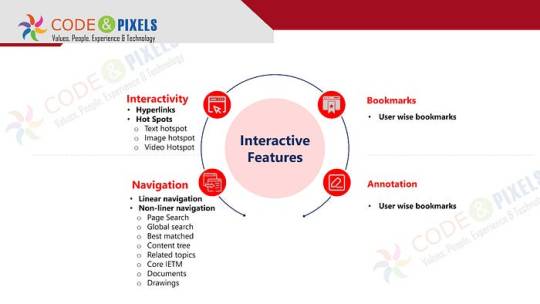
Interactive Features
Interactivity
Hyperlinks
Hot Spots
Text hotspot
Image hotspot
VideHotspot
Bookmarks
User wise bookmarks
Navigation
Linear navigation
Non-liner navigation
Page Search
Global search
Best matched
Content tree
Related topics
Core IETM
Documents
Drawings
Annotation
User wise bookmarks
The documents and pages are many hence, for easy and fast accessibility complete content is converted and stored as a database.
Whenever the user wants some information, IETM software produces the information in a fraction of a second.
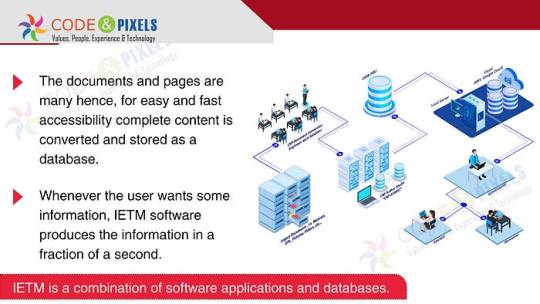
Use or Purpose of the IETM?
The purpose of the Manual is to give information related to the equipment to the end user for quick reference.
All the technicality is written in detail so that when an issue arises, the user can refer to the manual, as every time OEM or technical person or subject matter expert might not be available on the spot to resolve the issue.
If the manual has 10 pages users can refer easily.
But any system used by the defence will have multiple manuals and thousands of page counts and many times a user has to cross-refer between manuals, intra-manual and inter-manual to resolve the issue.
Referring to 10- 15 hard-copy or even soft-copy books simultaneously will be difficult and time-consuming.

How to access the IETM ?
IETM is a web-based application like our bank software or any other web application. The graphic user interface will be provided to use IETM through which users can interact and get the desired data.
Like all other standard software, Unauthorized users cannot access the IETM. IETM is a Login - login-based application. Only users having valid Login credentials can access the software.
Based on the user log credentials data will be provided to the user.
IETM has 2 types of Users and one Administrator
Maintainer
Operator
If the operator logs in, the user gets all the content related to operator use, similarly if the maintainer logs in only maintenance-related content is visible for that user.
Ideally, all the content is available for both users, because the purpose of the IETM is to refer to the manual to fix the issue.
Administrators can create users who can see the user’s navigation and log-in history and interact with the users using user dashboards through Annotations.
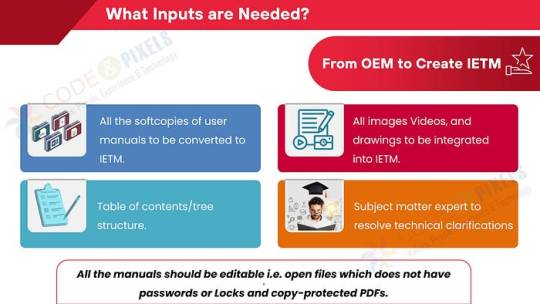
What Inputs are Needed? (From OEM to Create IETM)
All the softcopies of user manuals to be converted to IETM.
All images Videos, and drawings to be integrated into IETM.
Subject matter expert to resolve technical clarifications
Table of contents/tree structure.
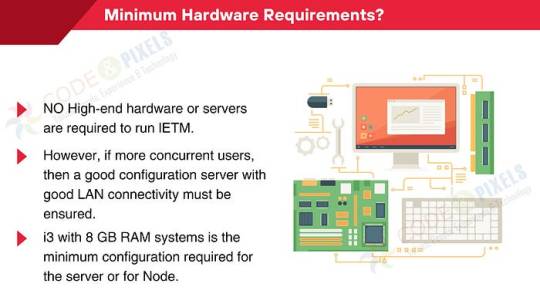
Minimum Hardware Requirements?
NO High-end hardware or servers are required to run IETM.
However, if more concurrent users, then a good configuration server with good LAN connectivity must be ensured.
i3 with 8 GB RAM systems is the minimum configuration required for the server or for Node.
Deliverables
BASED DB (Manuals are covered in the Database)
IETM VIEWER Software
User Manual and Installation Manual
Standards — compliance

Costing of IETM: (Interactive Electronic Technical Manual)
Level of IETM, is it Level 3 or Level 4
Cost will be based on the number of pages that are to be converted
The vendor calculates the cost per page. And a fixed cost of IETM viewer software
If you want to create IETM by yourself self then you also need to buy IETM authoring software.
What are these Levels?
Level — 1 is any PDF file
Level — 2 is a PDF file with hyperlinks from the table of contents to the body etc.
Level — 3 is an HTML application. More hyperlinks, simple search, a content tree having log a screen with a hardcoded username and password and supplied in the format of EXE so that Windows can easily open
Level — 4 is Software plus Content/manuals converted as Database

Regarding Level — 5, rest assured, till 2028 it will be Level — 4 only. As of now, there is nothing practically called Level — 5. Few are calling virtual reality and Augmented reality and Artificial intelligence Level — 5.
Pulling data from many user inputs and analyzing and giving results are done in Level — 5. IETM software cannot pull the data from various real-time points as No OEM will give the real-time information to third-party software directly. Yes, if the information is available offline, then that information can be imported into IETM and can be used as a reference.
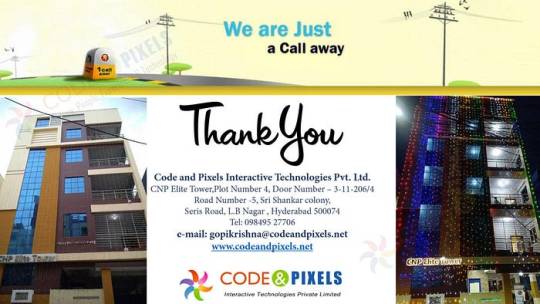
#ietm#software#technology#ietm developement#ietm code and pixels ietm hyderabad#ietm software#elearning#code and pixels#ietm level iv#codeandpixels#ietm level 4 software requirements#technical documentation#ietm document#ietm documentation#interactive electronic technical manual#Ietm Service Providers#Ietm Software Designers of India#Software Development Company#Elearning Solutions Company#E Learning Content Development Company#Online Education#Digital Education#Digital Content#Software Development Solutions#Elearning#Ietm Developers#Econtent Development#Elearning Solutions Providers#Econtent Developers#Econtent
3 notes
·
View notes
Text
eLearning content development
What sets InfyLearn aside is our human approach to learning. We don’t just create slides—we build experiences. Our instructional designers, challenge count experts, and multimedia experts collaborate to deliver content that’s not best informative but also visually appealing and clean to grasp. From bite-sized microlearning modules to complete route programs, we design studying that sticks.
Web :
0 notes
Text
0 notes
Text
New listings added today! (5/5/25): So, where do we go from here? That's the main question following the closing of STC. Here are some suggestions that I've gathered: #techcomm
#business communication#Communication#content#Content management#content strategy#Design#digital literacy#education#elearning#globalization#indexing#information architecture#information design#information development#instructional design#knowledge management#learning and development#localization#medical writing#proposal management#proposal writing#scientific communication#service innovation#talent development#tech comm#Technical communication#technical communications#technical editing#technical writing#technology
0 notes
Text
0 notes
Text


"I Will Create Course Outlines, Lesson Plans, Course Content, and Training Manuals"
Craft Tailored Learning Materials for Maximum Impact! Are you looking to design effective and engaging learning content? Look no further! I specialize in:
Course Outlines: Organized frameworks aligned with your goals.
Lesson Plans: Step-by-step teaching guides for impactful delivery.
Course Content: Informative, creative, and learner-focused material.
Training Manuals: Professional guides to support hands-on learning.
Why Choose Me? ✔ High-quality, original content tailored to your target audience. ✔ Quick turnaround with attention to detail. ✔ Customized solutions for educational and professional industries.
Let’s bring your vision to life! Place your order today or message me for custom requests.
#course content#course development#course outline creation#lesson plan design#training manual development#course content witer#educational material design#elearning#onlinecourses#skilldevelopment#online education#curriculum#elearning course#powerpoint#formatting#course outline#course curriculum#ghostwriter
1 note
·
View note
Text
On-demand and Customized Learning Management System
Tecnolynx designs adaptive learning pathways through a personalized, reliable, and user-friendly learning management system (LMS) platform. Our skilled developers excel in creating custom LMS solutions, handling integration, and overseeing implementation, all tailored to fit your unique learning requirements.
Looking for a powerful LMS solution? Connect with Tecnolynx for a customized and robust learning management system tailored to your needs.
#Learning Management System (LMS)#eLearning solutions#LMS development#Customized eLearning platforms#Online training software#Virtual learning environments#Educational technology solutions#Learning content management system (LCMS)#Interactive learning experiences#Personalized learning platforms
0 notes
Text
Custom eLearning Solutions for Effective Learning and Development
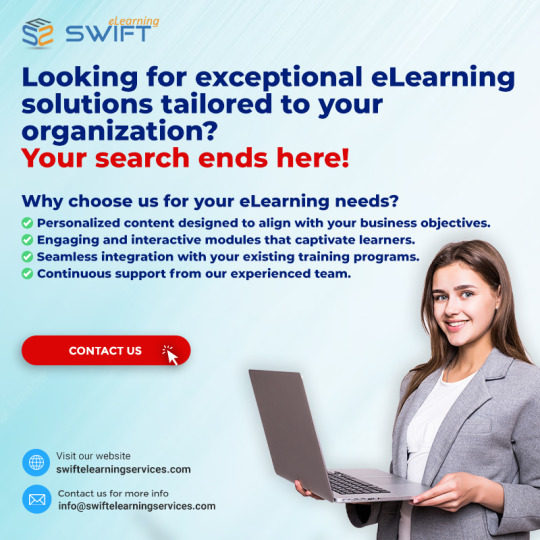
Custom eLearning solutions design interactive, engaging courses tailored to meet your specific training needs at competitive prices.
Our eLearning Solutions:
Rapid eLearning
Blended Learning
Legacy Content Conversion
Translation & Localization
Learning Management System (LMS)
Human Resource Management System (HRMS)
What is Custom eLearning?
Custom eLearning provides personalized online courses that cater to the unique needs of learners and organizations. Our goal is to enhance training effectiveness and maximize return on investment (ROI).
The transition from ILT/VILT to eLearning: Convert classroom-based training into SCORM and HTML5 content for interactive, accessible learning.
Microlearning Solutions: Bite-sized modules designed for on-the-go learning to improve quick knowledge retention.
Game-Based Learning Solutions: Engage learners through interactive, game-based learning strategies for effective knowledge transfer.
eLearning Content Development
We offer tailored learning experiences designed to meet specific objectives and learner needs.
Rapid eLearning: Quick, efficient course development using rapid authoring tools.
Blended Learning: Seamlessly integrates in-person and online learning for a balanced training approach.
Custom eLearning Samples
Explore our diverse range of custom eLearning solutions that enhance employee skills through interactive modules and simulations.
Content Conversion Solutions
Legacy Content Conversion: Modernize outdated materials into digital formats.
Flash to HTML5: Upgrade Flash-based courses for compatibility with modern standards.
PPT to eLearning: Turn PowerPoint presentations into engaging eLearning content.
ILT to eLearning Conversion: Transform traditional training materials into dynamic eLearning courses.
Translation & Localization Solutions
Our translation services convert eLearning content into various languages, while localization adapts it to fit specific cultural contexts.
eLearning Translation Services: Convert text, images, audio, and video for multilingual learners.
Multimedia Localization: Adapt multimedia elements like graphics, animations, and more for different audiences.
Our Approach
Storyboarding: Visualizing the course structure for better clarity.
Multimedia-Rich Content: Enhance engagement with videos, animations, and infographics.
Personalization: Tailored learning experiences to match individual needs.
Scenario-Based & Gamified Learning: Real-life challenges and gamification drive deeper understanding and motivation.
Compliances and Standards
We ensure compatibility with eLearning standards such as SCORM, xAPI, and HTML5, as well as mobile responsiveness across devices. We also utilize cutting-edge technologies like AI, VR, and AR to enhance learner engagement.
Custom vs. Off-the-Shelf eLearning
Custom eLearning: Tailored to your specific organizational needs, goals, and brand identity.
Off-the-Shelf Courses: Standardized solutions for quick deployment and cost-efficiency.
Elevate Your Training
We specialize in training for:
Onboarding
Safety & Compliance
Sales & Product Knowledge
Leadership & Soft Skills
Industries We Serve
Our eLearning solutions cater to diverse industries, including corporate organizations, educational institutions, healthcare, and government.
eLearning Authoring Tools
We use industry-leading tools like Articulate Storyline, Adobe Captivate, and Camtasia to deliver high-quality, custom eLearning content.
What Our Clients Say
“Swift provided excellent support in developing our online course. Delivered on time and within budget, the course is now widely used and highly effective.”— Mark Cozens, Principal Veterinary Officer
Please send us your requirements at:[email protected]://www.swiftelearningservices.com/contact-us/
FAQs
Why choose custom eLearning?
Custom eLearning offers flexibility, and enhanced engagement, and aligns closely with your goals.
What does it cost?
Costs typically range from $2000 to $8000, depending on the complexity and customization required.
How long does it take?
Custom eLearning content development generally takes 3 to 5 weeks per hour of content.
Can you customize eLearning content to reflect our brand?
Yes, we tailor all content to align with your company’s branding and values for a consistent learning experience.
#custom eLearning solutions#customs eLearning#custom eLearning development#eLearning development#custom eLearning content#bespoke eLearning#custom eLearning services#custom eLearning content development#custom eLearning design#customized eLearning#eLearning solutions
1 note
·
View note
Text
IETM Software & CBT| E-learning Design and Development |Interactive Electronic Technical Manual
Code and Pixels is best among top 10 eLearning companies in Hyderabad, India. Code and Pixels Interactive Technologies Private Limited (C&P) is an E-Learning service provider based in Hyderabad (India). We provide end-to-end E-Learning solutions, specialized in innovative use of technology.
https://www.codeandpixels.net
#what is ietm#ietm developement#ietm classes and levels#ietm viewer#ietm pdf#code and pixels#ietm Level-iv#elearning companies#elearning service provider#elearning solutions#digital education#software development company#elearning content development companies#elearning development companies#lms development companies#e learning software companies#android app development#software development services#custom software development#software development solutions#e learning solutions providers#custom elearning content development#elearning solutions company#custom elearning services#custom elearning development
1 note
·
View note
Text
8 Common pitfalls when implementing learning management software
Implementing Learning Management Software (LMS) can revolutionize how an organization manages training and education. However, many organizations face common pitfalls during the implementation process that can undermine the effectiveness of the LMS. Understanding these pitfalls and planning accordingly can help ensure a smoother transition and better outcomes. Here are some common challenges and a checklist to help avoid them:
1. Inadequate Needs Analysis
Pitfall: Failing to thoroughly analyze the organization’s needs and objectives before selecting an LMS can lead to a poor fit.
Checklist:
Identify specific training needs and goals
Engage stakeholders from various departments
Assess existing systems and content
2. Lack of User Involvement
Pitfall: Not involving end-users (e.g., employees, instructors) in the selection and implementation process can lead to resistance and underutilization.
Checklist:
Gather feedback from potential users
Include users in testing phases
Provide training and support for all users
3. Insufficient Training and Support
Pitfall: Neglecting to provide adequate training and ongoing support can result in poor adoption and effective use of the LMS.
Checklist:
Develop comprehensive training materials
Offer initial and refresher training sessions
Set up a helpdesk or support team
4. Poor Integration with Existing Systems
Pitfall: Failing to ensure that the LMS integrates seamlessly with existing systems (e.g., HR software, content management systems) can lead to data silos and inefficiencies.
Checklist:
Evaluate integration capabilities of the LMS
Plan for data migration and system compatibility
Test integration thoroughly before full deployment
5. Ignoring Scalability and Flexibility
Pitfall: Choosing an LMS that doesn’t scale or adapt to changing needs can limit future growth and flexibility.
Checklist:
Assess the scalability of the LMS
Ensure it supports a range of learning formats
Review the vendor’s update and support policies
6. Overlooking Data Security and Compliance
Pitfall: Failing to address data security and compliance issues can lead to breaches and legal problems.
Checklist:
Verify the LMS complies with relevant regulations (e.g., GDPR, FERPA)
Implement robust security measures
Regularly review and update security protocols
7. Inadequate Evaluation and Feedback Mechanisms
Pitfall: Not having a system in place to evaluate the effectiveness of the LMS and gather feedback can result in missed opportunities for improvement.
Checklist:
Establish metrics for evaluating LMS success
Collect feedback from users regularly
Make adjustments based on feedback and performance data
8. Unrealistic Expectations and Goals
Pitfall: Setting unrealistic expectations for the LMS’s capabilities and benefits can lead to disappointment and dissatisfaction.
Checklist:
Set clear, achievable goals for the LMS implementation
Communicate expectations clearly to all stakeholders
Monitor progress and adjust goals as needed
By addressing these common pitfalls effectively, organizations can maximize the benefits of LMS, ensuring a successful implementation that drives learning and development outcomes.
#LMS implementation#LMS#Learning management software#content management systems#elearning solutions#custom elearning development services#elearning platform
1 note
·
View note
Text
Rapid Course Development Solutions to Accelerate Learning Design
Rapid Development: Faster than a cup of coffee
Imagine turning your creative visions into fully-fledged eLearning courses within minutes, not hours or days. With Prodient.io, the days of laborious course development are over.

Rapid Development feature is designed for efficiency, allowing you to seamlessly translate your ideas into engaging and interactive courses without the steep learning curve.
The user-friendly interface streamlines the entire development process, enabling you to focus on crafting quality content rather than grappling with complex tools.
Say goodbye to long development cycles and hello to agility.
For more information, visit: https://prodient.io/
#benefits of rapid elearning#best rapid elearning development tools#content for rapid e-learning#elearning rapid development examples#rapid authoring#rapid authoring process
1 note
·
View note
Text

0 notes
Text
So, where do we go from here?
So, where do we go from here? That's the main question following the closing of STC. Here are some suggestions that I've gathered: #techcomm
In the aftermath of STC closing, there’s just a lot going on. As the Board VP who is still involved in closing activities, I’ve seen a range of emotions from those who’ve claimed a connection with STC. Most are sad but understand that we had to do what we had to do, and showed appreciation for the organization over the years. Other have expressed things…differently. I have words for those people…
#business communication#Communication#content#Content management#content strategy#Design#digital literacy#elearning#globalization#indexing#information architecture#information design#information development#instructional design#knowledge management#learning and development#localization#medical writing#proposal management#proposal writing#scientific communication#service innovation#talent development#tech comm#Technical communication#technical communications#technical editing#technical writing#translation#user design
0 notes
Text
Videos are a great way to deliver effective corporate elearning solutions for your organization. They are not only engaging and motivating but also help you to absorb more information in less amount of time. Stylus Solutions Pvt. Ltd. is one of the leading elearning development companies that can help you to craft mesmerizing video-based learning solutions that spark curiosity and hook your audience’s attention. So why, and when should one opt for video-based learning solutions? Let’s list some of the key benefits of video-based learning.
0 notes